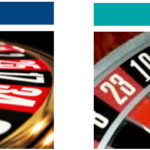'Behavioral economics': Your brain is not as rational as you think when it comes to finances
Stop fooling yourself: You’re not a calculator. No matter how calm and poised you think you are when making financial decisions, there is a factor you can’t do anything about: You’re human. However, banks such as BBVA can help you make the best decisions.

Behavioral economics is a relevant discipline when making finance-related decisions. In fact, some banking institutions take this component into account when advising their customers about ways of boosting their financial health; there are emotional, cognitive, social factors that have a significant impact on our decisions.
“To a large extent, these behavioral anomalies or biases, lead people to making poor decisions,” says BBVA CEO Carlos Torres Vila. These biases lead to overspending, and not saving enough, not covering risks because they are not perceived as such or gauging the value of money wrongfully. “In the financial world, it is especially important to be aware of these anomalies and the techniques to remedy them.
BBVA considers that the potential of ‘behavioral economics’ will help it “deliver on its corporate purpose much better, because we are going to help our customers make better decisions,” said Carlos Torres Vila, and this will “make customers trust us more, because they’ll realize that things are going better for them in their lives.”
A practical case
Over 14,000 BBVA employees took part in a survey on behavioral economics that proved that humans are not that rational when it comes to making decisions. Here are some of the questions included in the survey conducted by BBVA, which show how, on most occasions, people’s behavioral anomalies or biases influence their decisions. However, BBVA has designed adequate mechanisms to correct these biases and help people achieve their goals.
A. Anchoring Effect
Two groups are selected, but the only thing that changes is the result of the wheel. In this case, a number higher than the other.

Answer quickly, how many African countries are members of the UN?
GROUP A: 44
GROUP B: 11
This experiment aims to explain the ‘Anchoring’ effect, which is the human trend to use available information as point of reference for upcoming decisions despite the information being unrelated. This is due to the fact that we unconsciously consider the value of the anchors (34 or 5, depending on the group) before estimating this amount. This explains why in average, Group A chose a much higher number of African countries member of the UN than Group B.
The right answer is 54.
B. Allocation Effect
Same question for both groups:
Imagine you’re on your way to buy a lottery ticket with a co-worker, and each of you chooses a different number. On the way back to work your co-worker offers you 1 € for exchanging your ticket for his/hers, would you do it?
75% replied: NO.
Although 75% of respondents answered no, the logical thing is to trade tickets, as both numbers have exactly the same chances of being drawn. Trading tickets the respondent would win an extra euro. As results show, most respondents were reluctant to trade their ticket. This is due to the “endowment effect," which leads people to ascribe more value to things merely because they own them, regardless of market value.
C. Certainty and probability effect
As with most questions in the survey, the following question was stated differently for both groups:
Under emergency conditions, in a town with a population of 600, authorities need to activate the Contingency Plan, but they have two options. Which one would you choose?
GROUP A:
Option 1: 200 inhabitants are certain to survive. 68% chose this option.
Option 2: There are 2/3 chances that everybody dies. 32% chose this answer.
GROUP B:
Option 1: 400 inhabitants are certain to survive. 15% chose this option.
Option 2: Everybody survives with a probability of 1/3. 75% chose this answer.
Although the results stated by both options were exactly the same, the answers of Groups A and B answers were completely different.
This change in the distribution of results is caused by the Certainty and Possibility Effects. What these cognitive biases describe is that risk is averted when there are gains and assumed when losses are expected. In general terms, respondents prefer responses that are set out in a positive tone.
These effects were proposed by Daniel Kahneman and Amos Tversky in 'Prospect Theory’ (1979). Besides these two effects, they both identified a series of anomalies in judgments and decision making mechanisms that neoclassic economy had failed to explain until then. Their theories set forth a whole new way of looking at decision making processes. For their work, both authors were awarded the Noble Prize in Economics in 2002
D. Nostalgia effect
Two groups. Same question with different situations:
Take some time to remember…
GROUP A: … when and where you learned how to ride your bike
GROUP B: … the number of your national ID card or passport…
Now answer the following question: an organization is collecting money to help children in hospitals, how much money would you be willing to contribute?
GROUP A: €25
GROUP B: €22
Results show that Group A respondents, who were asked about a past and probably happy memory, contributed a higher amount than Group B respondents, who were asked to recall a neutral situation. This is the so-called ‘nostalgia effect’.
Although results were in line with expectations, maybe the lack of differentiation owes to the fact that at the time of making decisions people tend to mix different biases and heuristics. It is possible that, unintendedly, when designing this question Group B respondents were conditioned by asking them to think about their ID or passport number, which as a numerical value. Also, the fact that all respondents were expected to choose an answer in euros, and this currency is not used in many countries, might have influenced results.
Precisely, the methodological application of behavioral economics considers that personal experience is a key tool, as effects should not be applied without the quantitative experimentation phase, prior to the implementation “in production”.
Methodology
BBVA sent an email to a part of its workforce, formed by core-service employees except Turkey (i.e. excluding branch network employees), requesting them to fill out a survey that included a series of questions. To prove that we don’t always make “rational” decisions, in some of the questions the sample was split into two groups, each of which were requested to answer slightly different questions.
In others, the same question was asked expecting the whole sample to provide an incorrect or irrational answer.
The staff was divided by means of two groups of countries, to avoid the contagion that might have resulted if co-workers detected the two different versions of the surveys.
Level of confidence
Given high participation rate, the statistical confidence of the results was more than satisfactory. Using the identity’s level of confidence, the margin of error stood at 0.77%.
Size of population (excl. Turkey): 110.870
Level of confidence (%): 95%
Margin of error (%): 0,77%
Size of minimal sample: 14.134
Sample obtained: 14.316